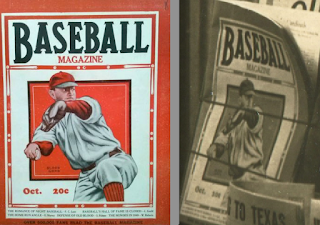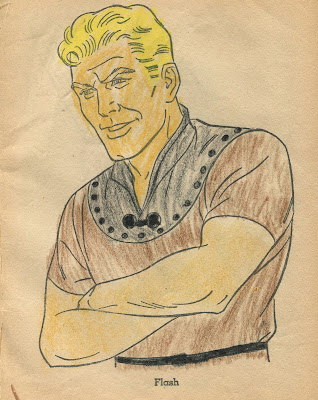Flynn's has The Evening Graphic, the Dispatch, the Tribune, The Observer, the World, the Telegram and the Sun. Take your pic! Plus Baseball Magazine for the fellas and Screen Romances for the gals.
The Judge was never found, but was declared dead in 1937. For years after, "Judge Crater, call your office" was a gag for comedians. He is still missing.
HEY! It's Jeanette MacDonald on the cover of Screen Romances! October 1930. It's the first issue! She was on plenty of magazine covers back then. She was quite an item, holding a secret torrid love affair with Nelson Eddy for years. I guess. I dunno. A super popular redhead, a good singer and a starch conservative. Of course she had numerous flings, and she ended up married to Gene Raymond, who was arrested three times for having sex with men. It appears to have been an arranged marriage, but it stuck. He was once arrested in a vice raid on a "homosexual nightclub" and once after physically abusing the actress, Nelson Eddy rushed over and kicked his ass. Oh Jeannette…whey didn't you marry Eddy? I wonder if her complicated life was the motivation for founding of the magazine.
What else do we have in the press. Car crash, sports shit. You gotta know your team to place your bets. Then and now betting on your team was an expensive pastime for some. All in all, 1930 was a cruddy time. The depression, illegal booze, segregated everything…and the mob was growing like Microsoft and Apple did in the 1990s.
Here is the Baseball Magazine. October 1930 also. The big article in this issue was the invention of night baseball! They thought it was a fad.
Collier's (up on top, but hidden) was a weekly, so it's not clear what was on the cover.
As for Flynn's Stationary, it was apparently founded in 1901. After having retail operations for decades, is now primarily a web-based business. If this is the same company, the location here could be 43 East 59th Street, from which they operate now. On the other hand, the way retail space changes in NYC, this cute little shop could have been anywhere. With all the sunglasses on display (not to mention children's sand toys…) I was guessing this was a shop on the way to the beach… but then voila, it could be a block from Central Park! One would enter the park on the south east side, near the pond. I image in plenty of nanny's stopping to pick up some toys for junior and some shades. Too bad their location is now sullied by being a stones throw from Trump Tower…Shudder. Still a guess, but possible. I have no idea if Flynn's operated a chain of stores or where this one was. This shop could have been one of a dozen for all I know. Who does a promotional photo without showing the address? The Topic Sign Company who commissioned it. They don't care. It's just another page in their press kit…the photo was printed on linen and has punched holes for a book.
Back then the famous Central Park Sheep Meadow HAD SHEEP. On the other hand, it was also the depression and out of work men lived in shacks (and desperation) in the park. Known as "Hooverville" I can only hope it never comes back. Period photos show a pretty sparse and sad place at the time. I'm not sure it was appropriate for kids except scruffy urchins. I have walked on the rock here...it's still there. Hooverville's were all over the country. When it happens again, Hooverville will be composed of "the middle class" and the city will put up charging stations for your phone.
The Flynn's photo is credited to M. Baer Salov from Montclair, NJ. It appears most of his work was done in the big city. A shutterbug working stiff who didn't amount to much. A similar photo by Salov on ebay now is shown below.
A Lending Library! I suppose even then the big New York Public Library was a pain. The Mid-Manhattan branch, which opened far later, provides quick access to circulating books now, but then? I'm not sure what the circulation policy of the big library was then. Let's borrow one from Flynn's. I imagine pickings were slim at the shop…but it is a good idea to get customers inside.
They developed film…as did everyone before digital. Drop it off, a day or few later, pick them up. A fine Kodak promotional sign.
The "Erected by The Topic Sign Company" inscription on the photo is odd. This hardly looks like an erection. More like a haphazard window display anyone could do.
Tradition Cigar was a Philadelphia company. A striking Tradition Cigar display which shows both cowboys and indians loved the brand. Those filthy stogies were a big item then, and appropriately the shop gives them an entire window. Tradition was owned by Bayuk (the parent company name) but they had more luck with Phillies. THEY were so popular other companies kept stealing their brand. The oval painted signs atop each window were placed by the Garcia Grande cigar company.
Flynn's photograph by M. Baer Salov 1930. Collection Jim Linderman




















































